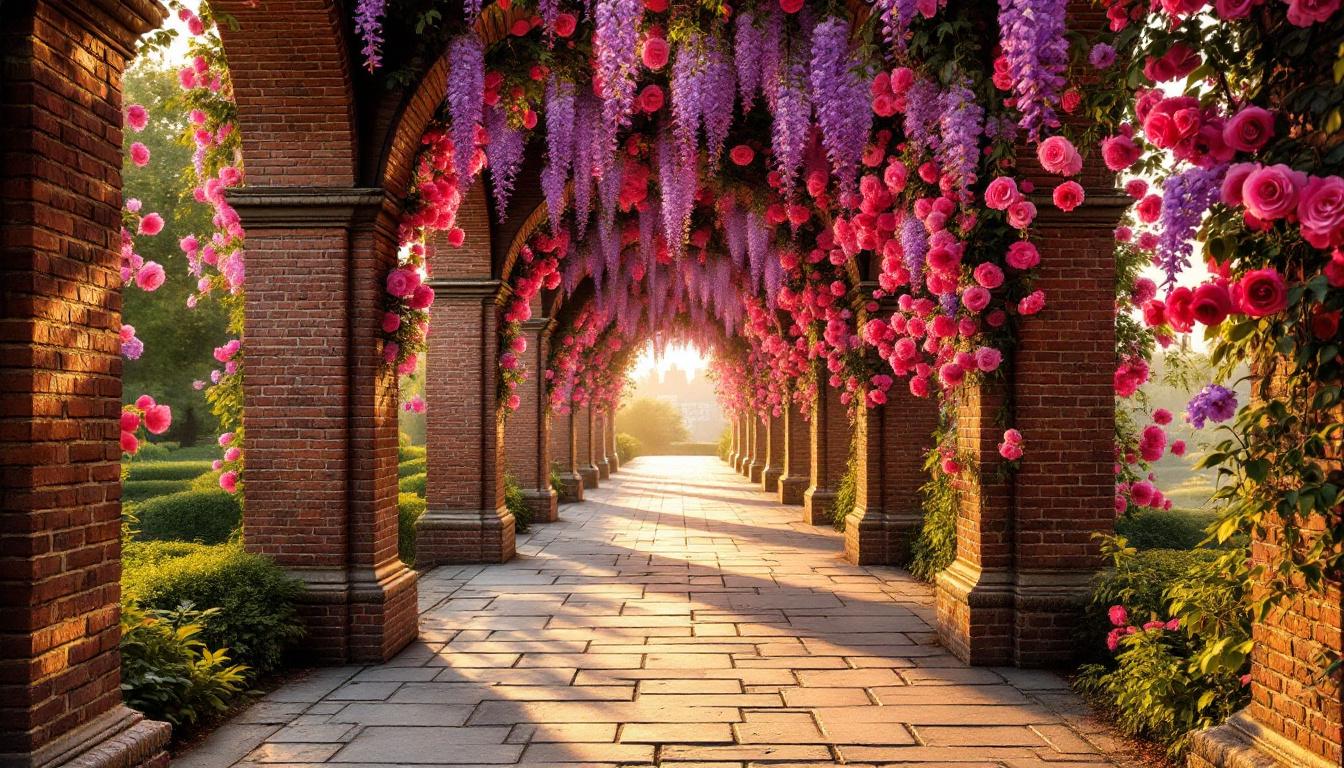Hidden beneath Hampstead Heath’s rolling expanse lies a 230-meter Edwardian pergola that most Londoners have never discovered. This tiny raised garden walkway, built from railway spoil and climbing 30 feet above ground level, creates an intimate sanctuary that gardeners protectively call “London’s secret rose cathedral.”
While millions crowd into Hyde Park’s 1.42 million square meters or Regent’s Park’s sprawling 1.97 million square meters, this concentrated masterpiece delivers more romantic impact per footstep than any major London green space. The Hill Garden and Pergola proves that in travel, as in love, size means nothing when magic runs this deep.
What makes this tiny space extraordinary isn’t just its scale—it’s the ingenious story of how Lord Leverhulme transformed Underground construction waste into one of England’s most photographed garden secrets, creating terraced paradise from the Northern Line’s discarded earth.
The intimate engineering marvel that defies expectations
Railway spoil becomes elevated paradise
When the Northern Line extended to Hampstead in 1907, Lord Leverhulme struck a deal that changed London’s hidden landscape forever. He acquired tons of excavated tunnel spoil, using it to raise his private gardens 20-30 feet above Heath level, creating dramatic terraces that landscape architect Thomas Mawson transformed into Italianate grandeur.
Concentrated beauty in 230 meters
The pergola’s genius lies in its compression—every step reveals new architectural poetry. Brick arches frame climbing roses and wisteria, while the elevated walkway provides Heath views impossible from ground level. Unlike sprawling parks where beauty dissipates across vast lawns, this tiny space concentrates Edwardian romance into a single, unforgettable journey.
What locals discover that guidebooks never mention
The hidden lily pond sanctuary
Beyond the main pergola lies a secret rectangular lily pond within triangular garden walls that most visitors miss entirely. Local photographers know to arrive at dawn when mist rises from the water, creating ethereal scenes that capture the garden’s mysterious soul. This hidden corner reveals why Hampstead residents guard their treasure so carefully.
Concealed greenhouse foundations
Scattered throughout the terraces are mysterious brick foundations—remnants of Leverhulme’s original conservatories that once sheltered exotic plants year-round. These archaeological fragments tell stories of Edwardian garden ambition, when private estates rivaled botanical institutions. Only repeat visitors notice these historical whispers.
The authentic experience tiny spaces provide
Free sanctuary versus £15 garden admission
While Chelsea Physic Garden charges £15 per visitor and Kew Gardens demands premium pricing, this masterpiece remains completely free. The City of London Corporation maintains it as public heritage, creating democratic access to aristocratic beauty that transforms any London visit from tourist routine into genuine discovery.
Peaceful mornings versus afternoon crowds
Early morning visits reveal the garden’s true character—roses heavy with dew, empty pathways echoing footsteps, and Heath views stretching toward London’s distant skyline. By contrast, Hyde Park’s 15 million annual visitors create constant noise, while this tiny sanctuary hosts perhaps 200 daily visitors during peak summer months.
The protective community secret locals cherish
Restricted hours preserving authenticity
Unlike 24/7 London parks, the pergola closes at dusk and during high winds, protecting both structure and atmosphere from late-night damage. These restrictions create scarcity that enhances appreciation—visitors must plan deliberately, arriving during optimal daylight hours when roses catch golden light filtering through ancient arches.
Gardener terminology and seasonal wisdom
Local horticulturalists refer to the construction technique as “spoil terracing,” while calling the hidden service areas “greenhouse quarters.” They know that July through August delivers peak rose blooms, when climbing varieties create violet-tinted tunnels of fragrance that justify the garden’s nickname as London’s secret rose cathedral.
Why this tiny garden changes everything about London visits
This 230-meter walkway proves that London’s greatest treasures hide in plain sight, waiting for travelers who seek concentrated beauty over sprawling spectacle. The Hill Garden and Pergola transforms assumptions about urban green spaces, demonstrating that intimate scale creates more powerful memories than massive parks ever could.
Visit early morning for optimal light and solitude. Respect gate closures and leave only footprints among the roses—this tiny sanctuary survives through collective protection, not tourist promotion. Sometimes the smallest discoveries leave the deepest impressions.
Essential planning information for garden discovery
How do I reach the Hill Garden and Pergola?
Take the Northern Line to Hampstead station, then walk 10 minutes through Hampstead Heath. Look for signage near North End Way entrance—the garden sits elevated above the main Heath paths.
What time offers the best photography conditions?
Early morning (8-10 AM) provides soft lighting and fewer visitors, while late afternoon creates dramatic shadows through the pergola arches. Avoid midday when harsh light diminishes the roses’ romantic atmosphere.
Are there seasonal considerations for visiting?
June through August offers peak blooms, but autumn provides beautiful foliage colors. Winter visits reveal the pergola’s architectural bones, though many climbing plants enter dormancy during colder months.
How long should I plan for a complete visit?
Allow 45-60 minutes for thorough exploration, including time for the hidden lily pond and greenhouse foundations. Photographers often spend 90 minutes capturing different angles and lighting conditions throughout the elevated walkway.
